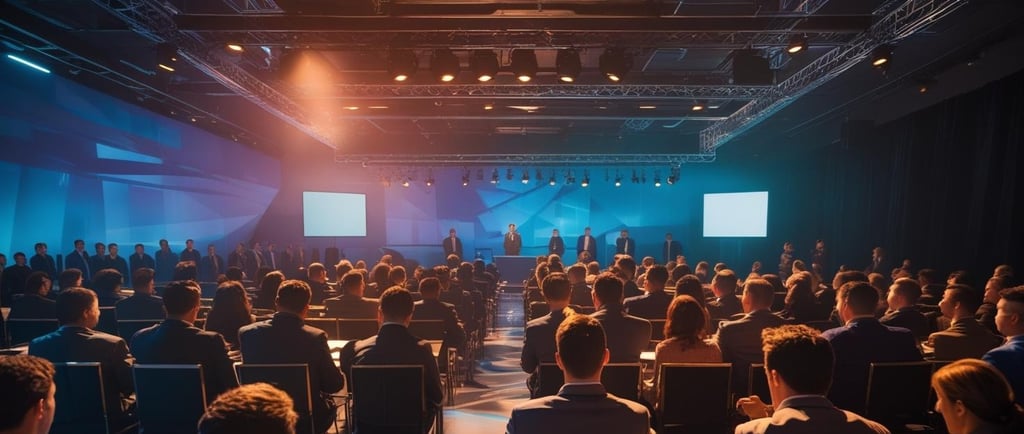Mastering Time at Conferences: Why Every Session Needs a Countdown Strategy
In the world of event planning, timing is everything. From managing keynote sessions to running simultaneous breakout tracks, time control can make or break your event's success. That’s why using a countdown timer for events is no longer a luxury — it's a necessity.
BLOG
7/3/20252 min read


In the world of event planning, timing is everything. From managing keynote sessions to running simultaneous breakout tracks, time control can make or break your event's success. That’s why using a countdown timer for events is no longer a luxury — it's a necessity.
At MassCalendar, we understand that seamless session flow and disciplined agendas are the backbone of great attendee experiences. This blog dives into why you need a session countdown timer for every speaker, panel, and transition — and what goes wrong when it’s missing.
Mistake 1: No Visual Cue for Speakers
A speaker may be engaging and insightful, but without a countdown timer for speakers, they can lose track of time, impacting every session that follows.
Displaying a stage timer for conference presentations gives speakers confidence to manage their time without glancing at a phone or relying on hand signals. This makes their delivery more focused and improves overall content flow.
Mistake 2: Poorly Managed Transitions
Switching between sessions — especially in multi-track or virtual events — can become a logistical mess if not timed well.
With a conference countdown timer in place, transitions are smooth and predictable. Everyone knows when the next session begins, and there's less confusion for attendees and support staff alike.
Mistake 3: Agenda Drift and Overruns
An ambitious agenda means nothing if you can’t stick to it. Without a visible event countdown timer, sessions overrun, breakouts overlap, and time buffers evaporate.
A centralized countdown timer for conference events serves as a pacing guide that keeps the agenda intact and audience expectations clear.
Mistake 4: Disengaged Attendees
When attendees feel like an event is dragging or running off-schedule, they tune out — or worse, leave.
Using a session countdown timer not only helps keep talks within limits but also signals to audiences that their time is respected. It's a small addition that makes a big difference in audience satisfaction.
Mistake 5: Uncoordinated Technical Execution
Behind every session is a team managing slides, cameras, lighting, and transitions. Without a countdown timer for events, these teams often rely on verbal or last-minute cues, increasing the risk of errors.
A shared conference countdown timer across the team ensures smoother, mistake-free transitions that make your event feel polished and professional.
How to Implement a Countdown Strategy
Add visible timers to speaker stages or virtual rooms
Set buffer time between sessions for safety
Use pre-set transitions to keep the flow
Brief moderators and technical teams on timer usage
Customize countdown lengths for different formats (keynotes vs. panels)
A countdown timer for conferences is not a generic clock — it’s a strategic tool to enhance every moment of your agenda.
Conclusion
Event timing isn't just about staying on schedule — it’s about delivering value, showing respect for attendees’ time, and reducing backstage stress. With the help of conference countdown timers, stage timers for conferences, and smart event countdown timers, you gain full control over your event’s pace.
Don’t let great content be dragged down by poor timing. Master your sessions, transitions, and speaker flow with the right countdown strategy — and your attendees will thank you for it.
MassCalendar.in
Send Bulk & Mass Calendar Invites Instantly
CONTACT
Meetings
+44 (0) 203 916 5117
© 2025. All rights reserved.
Help?
